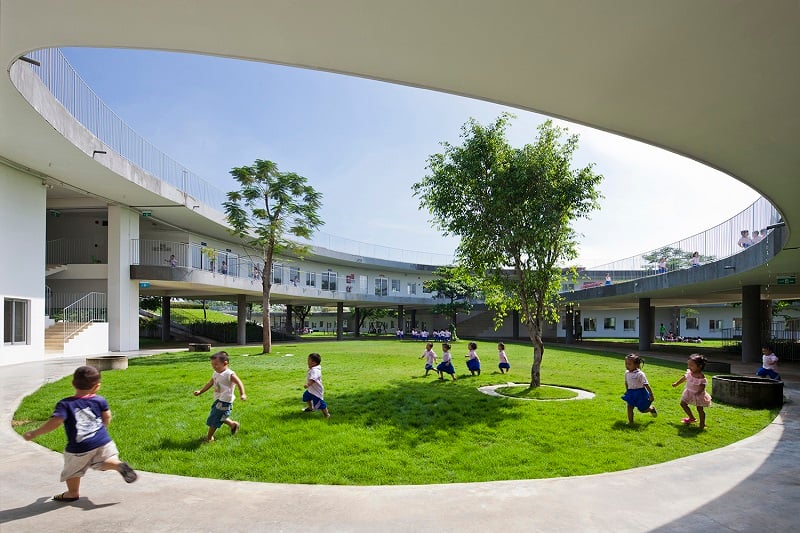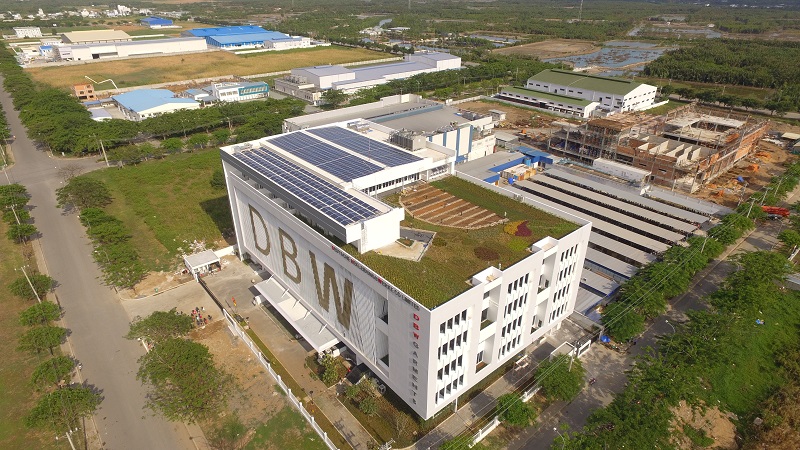Chris Humphrey talks to Dang Thanh Long, Executive Director of Vietnam Green Buildings Council, about how they increase the number of environmentally-friendly buildings in Vietnam and improve quality of life as a result
It seems fitting to meet Dang Thanh Long in Creative City, one of Hanoi’s most progressive office spaces. The building houses cutting-edge design companies, art galleries, hip clothing shops, internet start-ups and also Vietnam Green Buildings Council (VGBC). And while VGBC, an organization working in construction, may seem an odd addition, environmentally-friendly construction is still so new and vital in Vietnam that it makes sense.
Long appears relaxed and happy to discuss developments in the market, as we chat in the co-working space beneath their office. “They support the LOTUS rating system,” he says, when I ask him about the response of the Vietnamese government. “They emphasised that they still support LOTUS… But when I asked for one step further, that is they may officially endorse LOTUS as the rating system for public funded projects, they said they support LOTUS but also other systems like LEED.”
Founded in 2007, the organization gained full support from the Ministry of Construction in 2009 and has gone on to support over 40 projects in Vietnam through their LOTUS rating system. LOTUS itself was based on various other international rating systems, such as LEED or BREEAM, and aims to set a benchmark in Vietnam’s construction industry and guide developers toward a more efficient use of natural resources.

A LOTUS assessment rates a new construction using ten categories, including energy efficiency, waste and pollution, materials, impact on the environment and the quality of life of residents. Certification levels range from Good, to Silver, Gold and Platinum, although it is not just a test carried out post-construction, VGBC supports developers from the design stage right through to the build.
Despite his efforts, Long is unequivocal about the government’s decision not to officially endorse VGBC. “Using a rating system is essentially a voluntary choice by the developer,” he adds, “so it is okay if we have many rating systems.” Although, having said this, the response from customers in Vietnam is not so clear.
“We are an international NGO, so we cannot be a part of the government system or program,” reflects Long. “For example, the Ministry of Construction… If they have any product related to green buildings… maybe people say they should develop their own rating system. They still see VGBC as a foreign organization. On the other hand, the ministry did try to create their own rating system, but nobody used it. People choose VGBC and LOTUS because it is foreign and they trust it.”

One of the distinctive points about VGBC, though, is that it’s available in Vietnamese. And although its parent company is California’s Green Cities Fund, which initially played an important part in the organization’s genesis, VGBC is now managed almost entirely within Vietnam.
They’ve clearly made progress, but Long freely admits that Vietnam still has “too few projects” and suggests they need more case studies and reports to prove the benefit of LOTUS specifically in Vietnam. Some people, it appears, are still sceptical. In the next couple of years, cities like Da Nang or HCMC are actually considering offering some incentives for green buildings. If this happens it might be a game changer. For now, VGBC will have to stick to growing organically.
So what are the benefits of using a rating system like LOTUS? “The first thing is the client can save money,” says Long. “The building is more energy efficient and costs will be less in the long term. A better environment protects your health and comfort too. Indoor air quality improves. For some developers they also want to have green building as a marketing tool. It can help them to increase their sales or rental price.”
The ratings themselves are not cheap. Cost depends on the size of the project. For small-scale projects where the building area is below 2,500 square meters, the fee will be VND15 million. For bigger projects it can increase to 50,100 or even VND300 million. It’s impressive that even if a company spends 300 million on the assessment, they will still make savings due to energy efficiency. That said, the cost of the assessment, together with consultancy fees, is still very small compared to the soft and hard costs of construction.
Long adds that LOTUS can also be used as a budgeting tool. “Which green features are most applicable for my project?” he asks. “Whether building a factory or building a school, each of those project types demands or requires different green features. They can choose which features are most affordable and most suitable to their project.”

It’s interesting that Long mentions profit first, before mentioning the perhaps more obvious benefits such as energy efficiency, improved indoor air quality, better ventilation and saving the environment. “The largest number of projects using LEED and LOTUS are factories. Not because the project owners are so in love with protecting the environment,” he concedes, “but because of what I call institutional mandate. They have to do it to work with foreign companies.”
VGBC’s work is not limited to rating systems. They have also trained over 700 people in green building standards. And while these people can’t offer training themselves. They are now ready todiscuss the issues. They have also entered academia.
“We work with some of the main universities in this sector in Hanoi. The National University of Engineering and also the University of Technology in HCMC. At the moment the programmes are still quite simple—one or two day seminars. We introduce building ideas and concepts to the students. Most of the lecturers told me that the programs are interesting but they want longer training programs and more exercises for the students.”
So it would seem, then, that things are changing. Particularly after such interest from the academic world, and with VGBC recently seeing some of their first private housing projects being taken out. “We just recently launched our LOTUS home schemes. We have one or two private house projects now,” Long informs me. The number of enquiries they receive has also almost doubled every year for the last three of four years, although Long is ‘not sure if it is because of increased awareness of LOTUS, or just because of the booming construction market in Vietnam.”

Either way, with pollution levels rising alarmingly in Vietnam, one would hope that the number of LOTUS projects also continues to rise. Long believes the Formosa environmental disaster will help to “change the mind” of the government. “I think if we can have more incentives for green buildings, LEED and LOTUS can help to shape the market a lot.” And in a country with so few regulations in the construction industry, that might be exactly what’s needed.
Images Provided by VGBC


